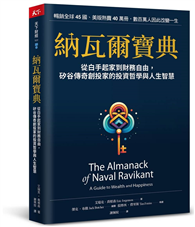| FindBook |
有 3 項符合
人工智慧:智慧型系統導論(第四版)的圖書 |
| |
ARTIFICIAL INTELLIGENCE: A GUIDE TO INTELLIGENT SYSTEMS 4/E 作者:NEGNEVITSKY 出版社:全華 出版日期:2025-01-20 |
| 圖書館借閱 |
| 國家圖書館 | 全國圖書書目資訊網 | 國立公共資訊圖書館 | 電子書服務平台 | MetaCat 跨館整合查詢 |
| 臺北市立圖書館 | 新北市立圖書館 | 基隆市公共圖書館 | 桃園市立圖書館 | 新竹縣公共圖書館 |
| 苗栗縣立圖書館 | 臺中市立圖書館 | 彰化縣公共圖書館 | 南投縣文化局 | 雲林縣公共圖書館 |
| 嘉義縣圖書館 | 臺南市立圖書館 | 高雄市立圖書館 | 屏東縣公共圖書館 | 宜蘭縣公共圖書館 |
| 花蓮縣文化局 | 臺東縣文化處 |
|
|
1. 淺顯易懂:本書刻意避開艱深的電腦科學專業術語,不會充斥複雜的矩陣代數和微分方程。作者強調書中的概念其實相當簡單直觀,適合一般讀者閱讀。
2. 無程式門檻:讀者不需要具備程式設計能力或深厚的微積分基礎就能理解內容。這本書是根據作者30年來授課經驗,針對非資訊背景的學生編寫而成。
3. 實用導向:書中涵蓋專家系統、模糊系統、類神經網路、深度學習等主題,並說明如何選擇合適的工具來解決實際問題。特別適合想要運用AI解決實務問題的讀者。
4. 跨領域應用:本書的目標讀者包含工程師、科學家、企業經理人、醫生、律師等各行各業的專業人士,特別適合那些想用非傳統方法解決問題的人。
5. 與時俱進:書中介紹最新的AI工具和技術,包括MATLAB工具箱(模糊邏輯、類神經網路、全域最佳化、深度學習)以及ChatGPT等。雖然書中會展示這些工具的使用,但內容並不綁定於特定工具,讀者可以靈活運用不同的工具來實作。
What are the principles behind intelligent systems? How are they built? What are intelligent systems useful for? How do we choose the right tool for the job? These questions are answered by Michael Negnevitsky’s Artificial Intelligence: A Guide to Intelligent Systems.
Unlike many books on computer intelligence, which use complex computer science terminology and are crowded with complex matrix algebra and differential equations, this text demonstrates that the ideas behind intelligent systems are simple and straightforward. This text assumes little or no programming experience as it tackles topics like expert systems, fuzzy systems, artificial neural networks, evolutionary computation, knowledge engineering, and data mining.
TABLE OF CONTENTS
1. Introduction to Intelligent Systems
1.1 Intelligent Machines, or What Machines Can Do
1.2 The History of Artificial Intelligence, or From the ‘Dark Ages’ to Knowledge-based Systems
1.3 Generative AI
1.4 Summary
Questions for Review
References
2. Expert Systems
2.1 Introduction, or Knowledge Representation Using Rules
2.2 The Main Players in the Expert System Development Team
2.3 Structure of a Rule-based Expert System
2.4 Fundamental characteristics of an expert system
2.5 Forward Chaining and Backward Chaining Inference Techniques
2.6 MEDIA ADVISOR: A Demonstration Rule-based Expert System
2.7 Conflict Resolution
2.8 Uncertainty Management in Rule-based Expert Systems
2.9 Advantages and Disadvantages of Rule-based Expert systems
2.10 Summary
Questions for Review
References
3. Fuzzy Systems
3.1 Introduction, or What Is Fuzzy Thinking?
3.2 Fuzzy Sets
3.3 Linguistic Variables and Hedges
3.4 Operations of Fuzzy Sets
3.6 Fuzzy Inference
3.7 Building a Fuzzy Expert System
3.8 Summary
Questions for Review
References
4. Frame-based Systems and Semantic Networks
4.1 Introduction, or What Is a Frame?
4.2 Frames as a Knowledge Representation Technique
4.3 Inheritance in Frame-based Systems
4.4 Methods and Demons
4.5 Interaction of Frames and Rules
4.6 Buy Smart: A Frame-based Expert System
4.7 The Web of Data
4.8 RDF – Resource Description Framework and RDF Triples
4.9 Turtle, RDF Schema and OWL
4.10 Querying the Semantic Web with SPARQL
4.11 Summary
Questions for Review
References
5. Artificial Neural Networks
5.1 Introduction, or How the Brain Works
5.2 The Neuron as a Simple Computing Element
5.3 The Perceptron
5.4 Multilayer Neural Networks
5.5 Accelerated Learning in Multilayer Neural Networks
5.6 The Hopfield Network
5.7 Bidirectional Associative Memory
5.8 Self-organising Neural Networks
5.9 Reinforcement Learning
5.10 Summary
Questions for Review
References
6. Deep Learning and Convolutional Neural Networks
6.1 Introduction, or How “Deep” Is a Deep Neural Network?
6.2 Image Recognition or How Machines See the World
6.3 Convolution in Machine Learning
6.4 Activation Functions in Deep Neural Networks
6.5 Convolutional Neural Networks
6.6 Back-propagation Learning in Convolutional Networks
6.7 Batch Normalisation
6.8 Summary
Questions for Review
References
7. Evolutionary Computation
7.1 Introduction, or Can Evolution Be Intelligent?
7.2 Simulation of Natural Evolution
7.3 Genetic Algorithms
7.4 Why Genetic Algorithms Work
7.5 Maintenance Scheduling with Genetic Algorithms
7.6 Genetic Programming
7.7 Evolution Strategies
7.8 Ant Colony Optimisation
7.9 Particle Swarm Optimisation
7.10 Summary
Questions for Review
References
8. Hybrid Intelligent Systems
8.1 Introduction, or How to Combine German Mechanics with Italian Love
8.2 Neural Expert Systems
8.3 Neuro-Fuzzy Systems
8.4 ANFIS: Adaptive Neuro-Fuzzy Inference System
8.5 Evolutionary Neural Networks
8.6 Fuzzy Evolutionary Systems
8.7 Summary
Questions for Review
References
9. Knowledge Engineering
9.1 Introduction, or What Is Knowledge Engineering?
9.2 Will an Expert System Work for My Problem?
9.3 Will a Fuzzy Expert System Work for My Problem?
9.4 Will a Neural Network Work for My Problem?
9.5 Will a Deep Neural Network Work for My Problem?
9.6 Will Genetic Algorithms Work for My Problem?
9.7 Will Particle Swarm Optimisation Work for My Problem?
9.8 Will a Hybrid Intelligent System Work for My Problem?
9.9 Summary
Questions for Review
References
10. Data Mining and Knowledge Discovery
10.1 Introduction, or What Is Data Mining?
10.2 Statistical Methods and Data Visualisation
10.3 Principal Components Analysis
10.4 Relational Databases and Database Queries
10.5 The Data Warehouse and Multidimensional Data Analysis
10.6 Decision Trees
10.7 Association Rules and Market Basket Analysis
10.8 Summary
Questions for Review
References
Glossary
Index
作者簡介:
nia, Australia. This text has been developed from his lectures to undergraduates. Educated as an electrical engineer, Dr Negnevitsky’s many interests include artificial intelligence and soft computing. His research involves the development and application of intelligent systems in electrical engineering, process control, and environmental engineering. He has authored and co-authored over 300 research publications including numerous journal articles, four patents for inventions, and two books.
1.1 Intelligent Machines, or What Machines Can Do
1.2 The History of Artificial Intelligence, or From the ‘Dark Ages’ to Knowledge-based Systems
1.3 Generative AI
1.4 Summary
Questions for Review
References
2. Expert Systems
2.1 Introduction, or Knowledge Representation Using Rules
2.2 The Main Players in the Expert System Development Team
2.3 Structure of a Rule-based Expert System
2.4 Fundamental characteristics of an expert system
2.5 Forwa...
|











